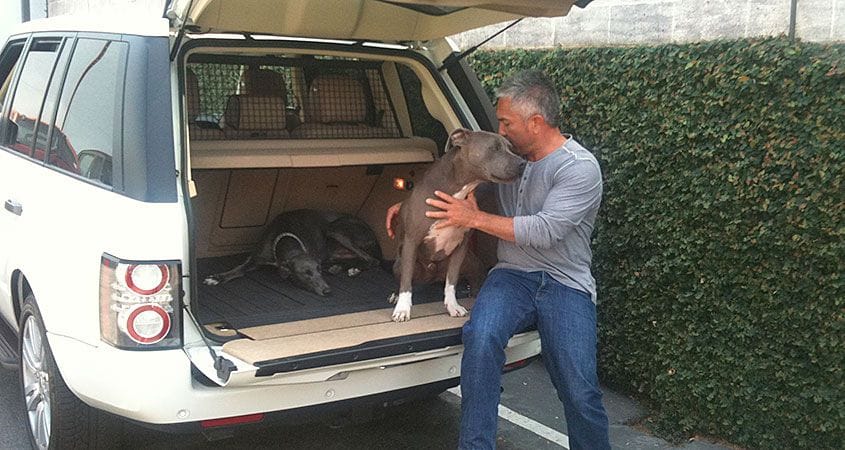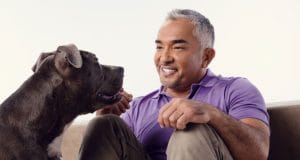At its basic level, all life is programmed to move in one of two directions: approach or avoid. Even the very first single-celled organisms in the oceans were either attracted to sunlight or fled from it, depending on their needs.
There are four reactions an animal can have to any stimulus: fight, flight, avoid, or surrender. Corner a possum, and it will either attack you, run away, try to ignore you, or play dead. This is something common to all animals, even humans. Despite the four choices, though, there are only two directions of movement.
Dogs move in one of two directions, too — and the direction your dog tends to move is the key to proper rehabilitation.
Fearful or Fearless
There are a lot of ways to describe the two directions, but they boil down to fearful and fearless. Some dogs are naturally leery of anything strange, new, or confusing. Other dogs will investigate unusual things and even confront them directly. Knowing which one describes your dog is the secret to rehabilitation, because applying the wrong approach will just make things worse.
Fearful dogs need to know that nothing bad will happen in any given situation if they move out of their fear. Fearless dogs need to know that something good will happen if they relax their forward motion and just let a situation be what it is. The former need to feel in control. The latter need to let go of control.
Build Trust
Punishment based training will absolutely not work on a fearful dog. Instead, you need to build trust by respecting their space and letting them explore their fear on their own terms. It may make you sad that the new dog you just rescued is hiding under the bed or in the closet and won’t be your furry new best friend, but you can’t force it to happen. You can let it happen, and if you create the proper space and energy, it will.
Rehabilitating a fearful dog can be a long process, so I won’t go into all the steps here, but you can find lots of articles about it on my website. Things that do help are figuring out what attracts the dog, like toys or treats, then using those to gradually draw him out, rewarding him for coming to you. Fearful dogs also respond well to certain “jobs,” like agility training, because they get to compete against themselves in order to make you happy.
Although many people mistake fearless dogs for being aggressive, they are actually easier to rehabilitate because you don’t have to break through the instinctual wall of fear. Instead, you have to establish yourself as Pack Leader, then show them that they do not get what they want until you get what you want.
What works really well with these dogs is teaching them to wait, especially when they’re excited. If they start bouncing off the walls when you take out the leash, push them back down, then ignore them if they keep showing excitement. If they still don’t go to a calm state, put the leash back and walk away.
Repeat the process, stopping at whatever point you’ve gotten to if the dog shows excitement, asking the dog to sit in whatever way you’ve taught him. The goal is to get the dog to sit calmly as you put on the leash and wait as you open the door, then to not move until you give the okay and make the dog go out the door behind you.
Consistency is Key
I know — that makes it sound easy, and I’ve heard from plenty of you how difficult this part seems. The keys are consistency and never backing down. You have to have your dog do the same thing every time in order to get what you’re going to give her, whether it’s a walk, food, or whatever else. And you cannot reward her by giving in when she doesn’t sit but you put the leash on anyway.
The interesting thing about fearless dogs is that, because they want to be in control, once you teach them what they have to do before you’ll do what they want, they’ll go out of their way to do it because, in their mind, they’re not responding to your actions; you’re responding to theirs. It’s the ultimate in reverse psychology. Fearless dogs like to show off. Once you’ve taught them a routine, don’t be surprised if they start performing the actions before you ask. The second your body language is saying “walk,” they’ll be sitting calmly by the door waiting for you — which is what you wanted all along.
The goal of the dog rehabilitation process is to bring balance. Although you have to use different methods at first depending on whether your dog is naturally fearful or fearless, once you’ve moved them beyond those states to a place of calm, submissive energy, then everything else works the same.
All life moves in one of two directions — approach or avoid. Once you’ve gotten your dog to that point of calm in the middle, then you can all move forward together, with you as the Pack Leader.
Stay calm, and fearless!











